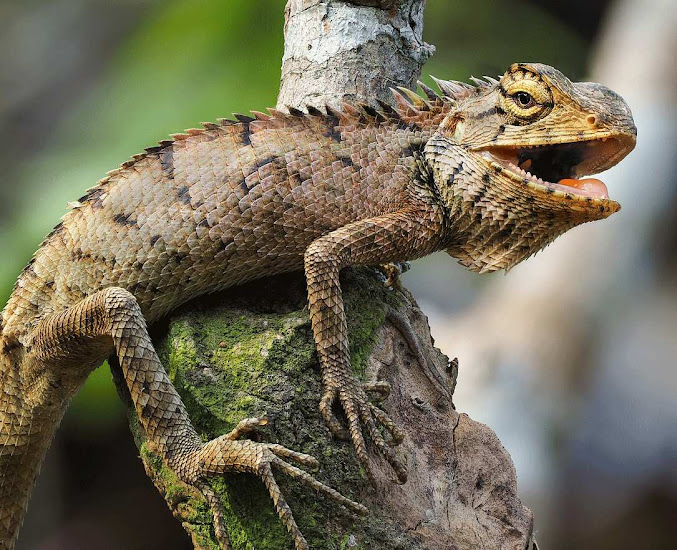Newborn Giraffe
Baby giraffe
The female is pregnant for around 15 months and conceives offspring standing upstanding.
The infant raises a ruckus around town from a level of 5 or 6 feet, the fall of what breaks the umbilical string and the natal sac. An infant giraffe remains around 5 or 6 feet at the highest point of the head, and it can weigh between 140 and as much as 200 pounds.
Upon entering the world, the ossicones are collapsed back against the head, yet spring up very quickly. Baby giraffes frequently have a lot of hair on their ossicones, and have incredibly lengthy eyelashes as well.
Presumably, in light of the challenges of collapsing up in the belly, the child's neck isn't as lengthy, in relation to the body, as the neck of a grown-up. Over the initial not many long stretches of time of life, as the baby develops, its neck gets proportionately longer, and at around 4 months old, the young person is utilizing its long neck to peruse for leaves in branches as high as 10 feet.
Giraffes stay with their moms between a year and a half and 2 years, and females specifically, may go with her every once in a while all through their lives.
Youthful guys might be physically experienced at 6 years of age, however, should pause, for the most part until they are their youngsters, to vie for a chance to mate. Guys take no part in the raising of the youthful, yet any gatherings voyaging together will look for one another, keep post while others drink, and have been known to safeguard one another against hunters.
Baby giraffe adaptions
The champion component of the giraffe is, obviously, that neck! So what sort of extraordinary adaptions should happen to make such a one-of-a-kind bodywork appropriately?
Most importantly, the giraffe has a 25-pound heart fit for making the outrageous circulatory strain expected to siphon blood 8 feet up to the cerebrum. However, when the giraffe brings its head down to eat or drink, the blood hurrying down at such high tension would make the veins burst. Pressure sensors along the neck's courses screen the circulatory strain and actuate constriction of the vein walls (alongside different components) to counter this expansion in pressure.
The blood leaving the giraffe's heart needs to accomplish something beyond arriving at the level of the head, it must be at a sufficiently high strain to go through every one of the fine vessels that supply the mind and different organs. To accomplish this, the blood leaves the heart at a strain of 200-300 mm Hg which is likely the worst hypertension of any living creature.
A giraffe's pulse is high to such an extent that it would crack the veins of some other creature, however, the blood vessel walls are a lot thicker than in different creatures, and their skin is so firmly extended over the body that it acts practically like a repulsive force suit, keeping the giraffe securely inside the giraffe! - Astonishing!
Baby giraffe facts
1. The giraffe is the biggest ruminant and the universe's tallest creature
2. Male giraffes can be 18 feet tall at the highest point of the horns
3. Giraffes have 2 to 5 horns called "ossicones"
4. The giraffe's neck is 6 to 8 feet in length and can weigh more than 600 pounds
5. Giraffes "bite their cud" very much like cows
6. Giraffes guard themselves by kicking
7. A giraffe's kick can kill a lion!
8. The giraffe's tongue is around 18 inches long
10 Facts About Giraffes
1. Giraffes are the tallest warm-blooded creatures on The planet. Their legs alone are taller than numerous people — around 6 feet.
2. They can run as quickly as 35 miles an hour over brief distances, or voyage at 10 mph over longer distances.
3. A giraffe's neck is excessively short to arrive at the ground. Subsequently, it needs to ungracefully spread its front legs or bow to arrive at the ground for a beverage of water.
4. Giraffes just have to drink once at regular intervals. The majority of their water comes from every one of the plants they eat.
5. Giraffes burn through the greater part of their lives standing up; they even rest and conceive offspring standing up.
6. The giraffe calf can bear upping and stroll after about an hour and in no less than seven days, it begins to test vegetation.
7. Despite the females' endeavors to remain over their calves during assaults by lions, spotted hyenas, panthers, and African wild canines (4), many calves are killed in their initial not many months.
8. A giraffe's spots are similar to human fingerprints. No two individual giraffes have the very same pattern.
9. Both male and female giraffes have two particular, hair-shrouded horns called ossicones. Male giraffes utilize their horns to here and there battle with other males.
10. Giraffes just need 5 to 30 minutes of rest in a 24-hour time frame! They frequently accomplish that in speedy rests that might endure one little while at a time.


.jpg)
.jpg)




